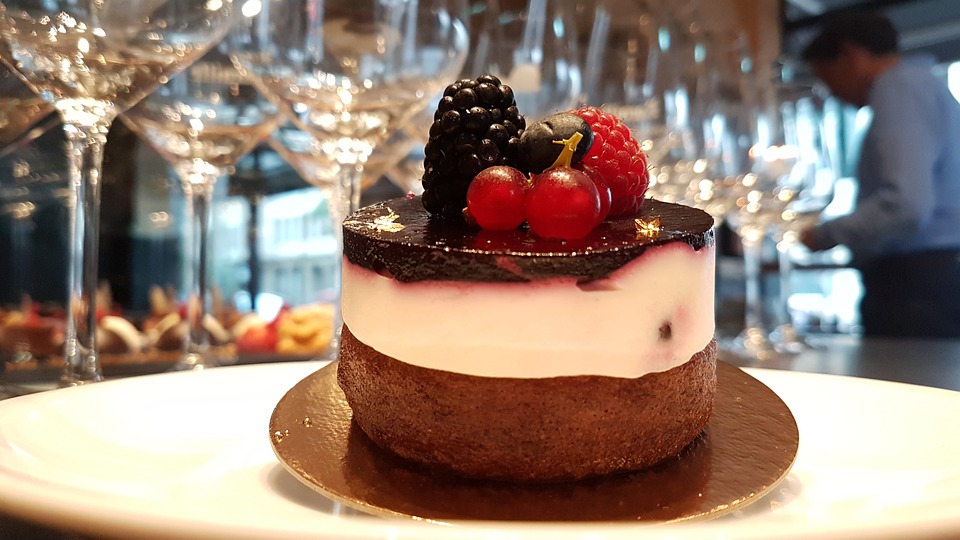In the last post we looked at the first three courses of a typical French meal: l’apéritif, l’entrée and le plat principal. Let us continue our culinary journey by exploring the four remaining courses.
La Salade et le Fromage (Salad and Cheese): The French typically eat their salad after the main course because ça facilite la digestion (it aids digestion). Americans tend to put salad and the main course on the same plate but the French use une assiette propre (a clean plate) for salad. Cheese can be served alongside the salad or can be eaten after and is usually served on its own platter. Sometimes a new bottle of wine is opened depending on the selection of cheeses at hand. And n’oubliez jamais (never forget) that you mustn’t eat cheese by itself, as it is meant to be consumed avec du pain (with bread) at all times.
There are hundreds of different varieties of cheese, some hard, some soft, some smelly, and some wrapped in ashes or nuts. They are made with either du lait de chèvre (goat’s milk), du lait de brebis (sheep’s milk) or du lait de vache (cow’s milk). Don’t be afraid to try a little bit of each.

Le Dessert (Dessert): Near the end of the meal, a new bottle of wine or a bottle of champagne is opened to complement the dessert. This can be anything from pâtisseries (pastries), tarte (pie/tart), flan (a type of custard/crème caramel), or quelque chose avec du chocolat (something with chocolate). The dessert is usually very rich and served sur une petite assiette (on a small plate). This would be the perfect opportunity for a Délice au Chocolat (Chocolate Delight) or Crêpes Suzette.
Le Café (coffee): The meal nears its end with a delicious (and very small) tasse de café (cup of coffee) accompanied by a mint or un petit morceau de chocolat noir (a small piece of dark chocolate). Coffee is either served at the table or in the salon.
Le Digestif (Digestif): If the apéritif is used to open up the appetite, the digestif is used to do the opposite. Digestifs are strong alcohols consumed in very small quantities. French Brandy such as Cognac or Armagnac, liqueurs, fortified wines such as Sherry or even eaux-de-vie (fruit brandy—literally translated waters of life) are popular digestifs. Digestifs are usually served in the salon (living room) and bring the meal to an end.






Comments:
Kish Logan:
You’ve omitted fruit, which is often instead of pudding, but which is an inherent part of even the humblest of french meals.
Nikki Elliott:
I love this! I am going to follow steps for my daughter’s Sweet Sixteen birthday party! I am a certified chef so I can totally rock it out! Also minored in French so this is perfect! Thank you for the idea!!!